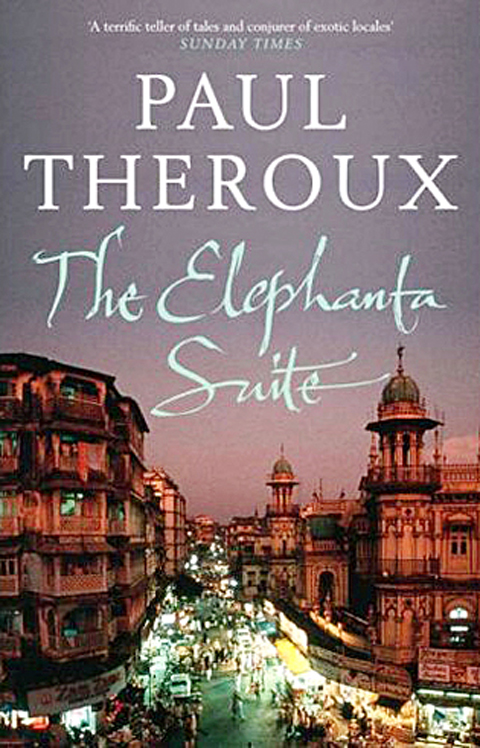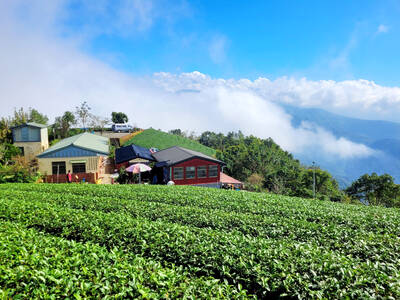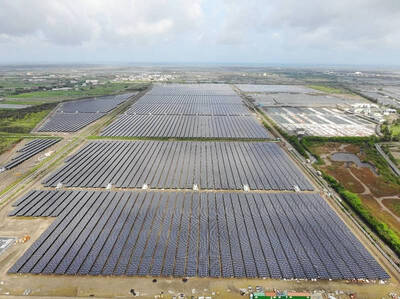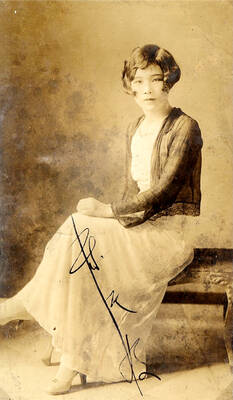Paul Theroux is nowadays approaching classic status. He’s insightful, incisive, a master of aphorism, and can skewer pretension like few others. He has one of the sharpest minds in the writing business, with few blind-spots (music may be one of them, though he’s often brilliant on painters). Above all else, he’s compulsively readable, and in these three novellas set in modern India he’s on the absolute top of his form.
Westerners often go to India to seek enlightenment. Certainly Theroux’s protagonists do, and what they find is depicted with brutal realism. This contrast between exalted expectation and shocking reality is an old theme, and India seems to invite it as nowhere else. But here it’s handled with a real freshness, and as a result The Elephanta Suite is a tour de force. From every point of view this is an unforgettable book.
There are echoes of early 20th-century English masters such as E.M. Forster, Aldous Huxley and D.H. Lawrence, but Theroux is arguably more compelling, and less deluded, than any of them, though routinely much more vicious.

There’s a tenuous connection between the stories — someone in each stays in the Elephanta Suite at the Taj Mahal Hotel in Mumbai. But this, you feel, is a token gesture made to satisfy a publisher who wanted to avoid describing the book as tales, hoping customers would assume it’s a novel instead.
Clearly Theroux has recently revisited India, and these stories are his judgment. It could hardly be harsher. The scene is characterized at various points as “damaged people scrambling on ruins,” “a bazaar of cheap merchandise,” buildings you’re not sure are going up or falling down, and characters ranging from “weirdly comic salesmen” to “bug-eyed fatties in tight clothes” (this last a description of film posters). India’s matriarchs are “complacent and hypocritical, bullies and nags to everyone except their sons, allowing them to rule.” Mumbai’s Chowpatty Beach boasts dirty sand, sodden litter, and scummy water with “the deadly fizz of battery acid.”
Religion is at the center of India’s alleged appeal, and the Sai Baba community at Whitefield, with its monied adherents (“if not a cult, pretty close to one”) features in the last story. Sai Baba himself makes an appearance, concluding as follows: “Alice bowed and thanked him, she touched the hem of his orange tunic, and still bowing she backed away. Crap, she thought.”
Indian English, too, becomes the victim of a vindictiveness Theroux has always displayed and doesn’t appear in any mood to shake off. He parodies its distinctive pronunciation and penchant for words (“thrice,” “jocundity,” “tarry”) that are almost obsolete elsewhere. The Indian accent (“flatporm pyve” for “platform five”) is much mocked.
But he’s almost as caustic about American English, though in a rare moment of generosity praises the Americanized English being taught to call-center trainees in Bangalore. It somehow liberates them, and makes them genuine individuals for the first time in their lives, his speaker believes.
The first piece, the least strong of the three, features an American couple staying at an ayurvedic spa in the Himalayan foothills. Each is sexually attracted by a staff-member (Theroux is shattering on the contrast between how these people look and where they actually live). But matters shift dramatically overnight, and disaster quickly looms.
The second presents an American businessman lured into sex with Mumbai’s child-prostitutes, then feeling a call to the spiritual path of renunciation. He renounces more than he expects, while his Indian assistant — a Jain possessing “the manner of an accountant … with his credit and debt columns in the ledger of karma” — embraces the American lifestyle with a hideous delight.
The last novella is the one featuring Sai Baba. An American girl is stalked by an educated young Indian she meets on a train. Following the law’s predictable delays, she takes matters into her own hands.
Each of these superbly crafted tales ends in a catastrophe of one kind of another, and huge swathes of Indian life are relentlessly mocked along the way. This is Theroux’s answer to claims of the subcontinent’s “economic miracle,” and one thing is certain — you’ll think twice about visiting India even for a day after reading this book.
But Theroux can’t be accused of not having thought hard about the subcontinent. Its business, spiritual and hi-tech worlds are all scrutinized and ruthlessly judged. (“Backstabbing was a standard business practice, even part of the culture, with real backs and real knives”). His characters are vividly imagined, and sometimes sympathized with — they’re by no means always mouthpieces for his own thoughts. But just as Somerset Maugham accepted the hospitality of rubber planters in Malaysia and then depicted them as hopeless basket-cases in his stories, so too Theroux has probably been to the ashrams and fetid lanes he describes, and here is telling it as, in his view, it really is.
There’s sympathy distributed along the way, however. People are “exploited, like most working people on earth,” with many of them “too poor to obey the law.” “If they’d demanded to be fairly paid they would not have jobs,” he writes, with more in the same vein. There’s also a genuine love of animals and their uncorrupted world. Theroux once wrote a novel on the virtues of vegetarianism, and here he shows himself not entirely hostile to meditation, at least in the form of “the trance-state induced by routine.”
This book must already be as notorious in India as Theroux’s old sparring-partner V.S. Naipaul’s 1964 diatribe An Area of Darkness. But all of these new stories are thrillingly plotted, each ending in a devastating climax after many unpredictable twists, and with riveting insights on virtually every page. For all the poisoned darts flung at all and sundry, this is vintage Theroux, a truly brilliant performance, and one of the best new books I’ve read in years.

Every now and then, it’s nice to just point somewhere on a map and head out with no plan. In Taiwan, where convenience reigns, food options are plentiful and people are generally friendly and helpful, this type of trip is that much easier to pull off. One day last November, a spur-of-the-moment day hike in the hills of Chiayi County turned into a surprisingly memorable experience that impressed on me once again how fortunate we all are to call this island home. The scenery I walked through that day — a mix of forest and farms reaching up into the clouds

With one week left until election day, the drama is high in the race for the Chinese Nationalist Party (KMT) chair. The race is still potentially wide open between the three frontrunners. The most accurate poll is done by Apollo Survey & Research Co (艾普羅民調公司), which was conducted a week and a half ago with two-thirds of the respondents party members, who are the only ones eligible to vote. For details on the candidates, check the Oct. 4 edition of this column, “A look at the KMT chair candidates” on page 12. The popular frontrunner was 56-year-old Cheng Li-wun (鄭麗文)

“How China Threatens to Force Taiwan Into a Total Blackout” screamed a Wall Street Journal (WSJ) headline last week, yet another of the endless clickbait examples of the energy threat via blockade that doesn’t exist. Since the headline is recycled, I will recycle the rebuttal: once industrial power demand collapses (there’s a blockade so trade is gone, remember?) “a handful of shops and factories could run for months on coal and renewables, as Ko Yun-ling (柯昀伶) and Chao Chia-wei (趙家緯) pointed out in a piece at Taiwan Insight earlier this year.” Sadly, the existence of these facts will not stop the

Oct. 13 to Oct. 19 When ordered to resign from her teaching position in June 1928 due to her husband’s anti-colonial activities, Lin Shih-hao (林氏好) refused to back down. The next day, she still showed up at Tainan Second Preschool, where she was warned that she would be fired if she didn’t comply. Lin continued to ignore the orders and was eventually let go without severance — even losing her pay for that month. Rather than despairing, she found a non-government job and even joined her husband Lu Ping-ting’s (盧丙丁) non-violent resistance and labor rights movements. When the government’s 1931 crackdown